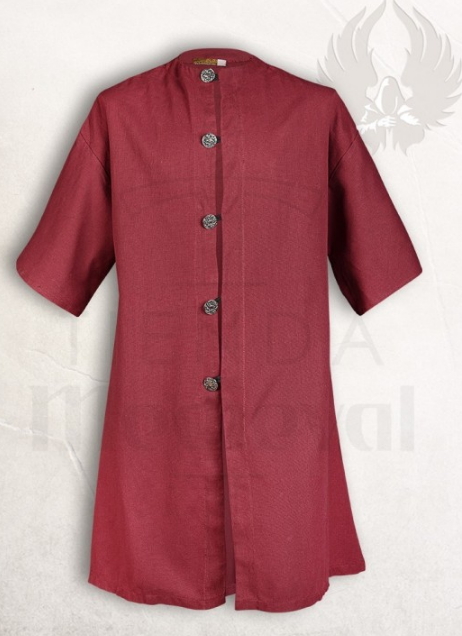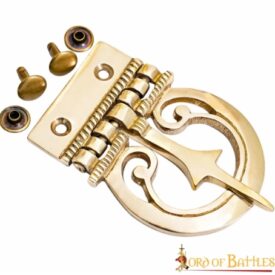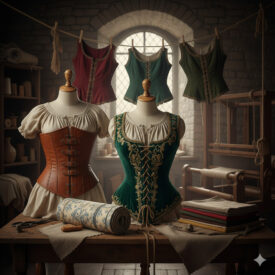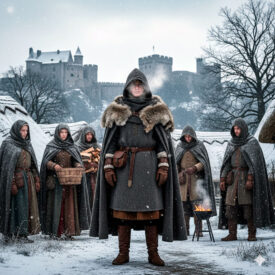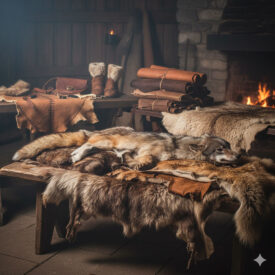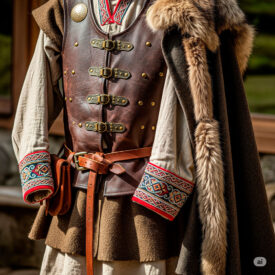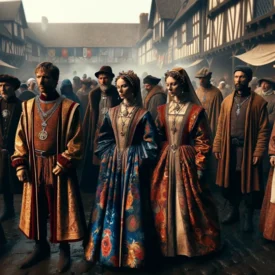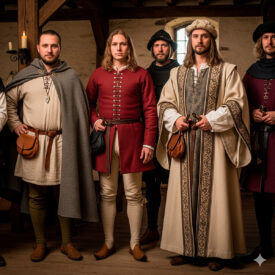The gaban is much more than just a coat. Its history is intertwined with the evolution of men’s clothing, from the humble shepherds of the 15th century to iconic characters in literature and film. Often confused with other garments like the trench coat, the gaban has its own identity, forged in functionality, timeless elegance, and deep cultural symbolism.
In this article, we delve into the fascinating world of the gaban: its origins, the characteristics that distinguish it, its cultural evolution in places like Mexico, and its legacy in contemporary fashion. We will explore how this garment has evolved from being rough woolen clothing to a symbol of sophistication and style.
What is a gaban? Origin and evolution of a garment with history
The etymological origin of the term gaban dates back to the classical Arabic ‘qabā’, which means sack with a hood. This etymological connection already gives us a clue about its humble and functional origins. Since the 15th century, the gaban was the preferred outer garment for shepherds and travelers, who needed effective protection against the cold and rain. It was made from thick, resistant fabrics like cloth or wool, designed to endure harsh weather.
Over time, this functional garment evolved. From a simple cape with sleeves and a hood, it was transformed into a long, tailored, and more sophisticated coat or jacket. This change marked its transition from an exclusively utilitarian garment to an element of style and distinction, adopted by various social classes, from scoundrels and artists to nobles and scholars.
Spanish literature bears witness to this evolution. In Don Quixote, Miguel de Cervantes refers to and describes the hidalgo Diego de Miranda as “the knight of the green gaban,” an image that evokes elegance and status. Authors like Lope de Vega and Benito Pérez Galdós also mentioned this garment in their works, confirming its constant presence in the collective imagination throughout the centuries. Additionally, in 19th century Seville, Antonio Machado Núñez was known as “the doctor of the white gaban,” associating the garment with academic distinction.
Gaban vs. trench coat: Timeless elegance versus modern functionality
Although often confused, the gaban and the trench coat are distinct garments with very clear purposes and styles. Understanding their differences is key to appreciating the richness of each.
Gaban: The coat of sophistication
The gaban is a long coat, generally reaching to the knee or slightly below. It is made from thick materials such as wool, which gives it excellent warmth to protect against the cold. Its design stands out for its straight, elegant, and sophisticated cut. It often has wide lapels that can be buttoned to the neck and a front closure with buttons, often arranged in a double-breasted style. It is the ideal choice for formal occasions, special events, or simply for those seeking a refined and timeless style.
Trench coat: The garment for rainy weather
On the other hand, the trench coat is a garment designed primarily for functionality. Its aim is to protect from rain and wind, and thus it is made from waterproof fabrics such as gabardine cotton. It is a lighter and more resistant garment than the gaban. Its design is functional, with a pointed collar, narrower lapels, and often a double-breasted row of buttons and an adjustable belt at the waist. The trench coat is a versatile garment, perfect for daily use in humid climates, matching well with casual or semi-formal outfits.
In short, while the gaban is a symbol of elegance and warmth, the trench coat focuses on protection from the weather. Each has its place in the wardrobe, but their purposes are markedly different.
The gaban in Mexico: A cultural and artisanal symbol
In Mexico, the gaban has transcended its function as a coat to become an element with deep cultural and historical roots. In Hispanic America, it has retained an appearance similar to the poncho, and in Mexico it is identified with traditional garments such as the jorongo, sarape, and cloak.
The artisan tradition of the Guadalupe Yancuictlalpan (Gualupita) community, in the State of Mexico, is a clear example of the cultural importance of the gaban. The creation of these wool garments is an art transmitted from generation to generation, with origins dating back to pre-Hispanic and colonial times. The creation process is meticulous and can take months, including sketching patterns, dyeing threads, and hand weaving. This craftwork not only supports dozens of families but also gives the region a unique cultural identity.
The mottled gaban, in particular, has become a symbol of the identity of the State of Mexico, valued for the complexity of its work and the quality of materials, mainly wool or cotton. Artisans like José Armando Nava Carranza, who have devoted their lives to this craft, have been recognized with awards, demonstrating the value and prestige of this tradition.
The gaban in popular culture: from Clint Eastwood to today’s fashion
The influence of the gaban goes beyond craftsmanship and literature. This garment has found its place in popular culture, solidifying its status as a style icon. A clear example is its popularization in cinema, especially in the western genre. Actor Clint Eastwood made the gaban, or its similar the poncho, a fundamental piece of his wardrobe in iconic films such as A Fistful of Dollars or The Good, the Bad and the Ugly. This association with the image of the solitary, rugged cowboy cemented the image of the gaban in Western fashion.
In the 21st century, indigenous and traditional clothing has greatly influenced contemporary fashion. The gaban, which was previously used mainly for warmth, has become a fashion accessory, adopted by major brands and celebrities such as Taylor Swift and Cara Delevingne. This shows how a garment with deep historical and cultural roots can be reinterpreted and adapted to current trends, maintaining its relevance and appeal over time.
The fashion of the 1960s, with its slimmer cuts and belted coats, also reflected the growing popularity of the gaban, demonstrating that its design has always been in tune with trends in men’s elegance. Its long, tailored design with wide lapels gives it a refined appearance that never goes out of style, making it an essential garment for those seeking a sophisticated and timeless look.
The gaban is a garment that combines history, tradition, elegance, and functionality. If you are looking for a coat that sets you apart and protects you from the cold with unmistakable style, don’t hesitate to explore our options. Discover the beauty of medieval men’s and women’s clothing, and find the perfect gaban to suit your style and personality.

